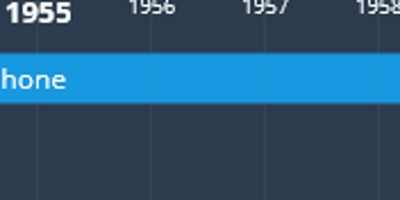jan 25, 1930 - Records (Vinyl Records)
Description:
Vinyl records were first introduced in the early 1930s. Sound is captured on a vinyl by a stylus scratching on to a thin vinyl disk. A vinyl is made from an aluminium core which is sanded down to a smooth finish. The discs are then placed on a conveyor belt ready to be coated in a nitrocellulose (nitro) lacquer. Once dry, the nitro finish becomes a thick coating similar to nail polish. The discs are then checked for any flaws. Once this is done, a hole is punched into the centre to complete the new master disc. Once the master discs reach the studio, they are cut using a recording machine called a lathe. First the master disc is placed onto the lathe and the protective strips, which were placed on each disc to protect it in packaging, are carefully removed. To secure the disc, the engineer places a vacuum line at the centre. Next, a microscope and cutter are moved to the disc’s outer edge ready to perform a test cut. The microscope is used to assess the test groove for any issues. Once happy, the engineer begins the recording, allowing the lathe to cut a continuous groove using a sapphire tipped cutter. The recording is monitored via a computer, which can adjust the spacing between grooves if required. A vacuum removes the scrap lacquer created by the cutting. After the recording is finished, the engineer will check the cut for any issues before scratching a serial number (and sometimes they add their signature) into the inner edge of the disc. Next, to create vinyl records from the master record, the stamper must be made. To make the stamper, the process begins with washing the master disc before spraying it with tin chloride and liquid silver. Any silver that doesn’t stick is washed away. A duller metal is then added to the silver side, which stiffens the disc ready for the electroplating process. Electroplating involves immersing the silver plated disc into a liquid tank of dissolved nickel. When immersed, the nickel is fused to the silver surface by an electrical charge. With the nickel set into the grooves, the disc is removed from the electroplating tank and the metal layer is removed from the original lacquer disc. The removed layer is a stamper, this will be used to press shiny new vinyl records. To finish the stamper, the manufacturer uses an optical cantering punch to make a hole in the exact centre before progressing to trimming off any excess metal. Next the label must be prepared. Labels are produced in square stacks, which are first punched into the centre and trimmed into circles. To press the vinyl records, the manufacturer first pours Polyvinyl Chloride pellets into a hopper, which feeds the material into an extruder that condenses them into a small puck shape referred to as a biscuit. The machines hold these vinyl biscuits in place as the labels are placed above and below. The biscuit and labels are then moved to the press where 100 tons of pressure is applied at very high temperatures to melt and mold the biscuit into a new vinyl record. Once cool the excess vinyl is ready for a final trim.
Vinyl had a huge impact on music consumption in the late 1950s and early 1960s as that was a time when youths had some independence and they were able to get jobs and had an a disposable income and they were able to spend it on what they liked, including vinyl which became more available to the public at this point.
Added to timeline:

New timeline unit 5
Date:
